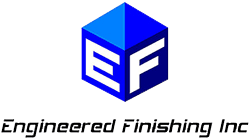If you want to know the advantages of abrasive flow finishing (AFF), you are at the right place. There is no doubt about the importance of abrasive flow finishing for the manufacturing industry. It helps manufacturers to make high-end products with flawless finish.
Abrasive flow finishing, aka ‘abrasive flow machining’ or ‘extrude honing’, is referred to as a refined manufacturing technique, which ensures optimum surface enhancement. Apart from its extensive capability of enhancing surface finishes, it can also improve the efficiency of the finished product.
However, before unleashing the benefits of abrasive flow finishing, we have comprehensively discussed the abrasive flow finishing and tools used in this process. So, let’s dive in!
Understanding Abrasive Flow Finishing
Abrasive flow finishing (AFF) is an advanced machining process that falls under the broader category of abrasive machining. Unlike conventional methods like grinding or polishing, AFF utilizes a semi-liquid abrasive medium to remove unwanted material and refine the surface of workpieces.
The key components of AFF include abrasive media, a specially designed tool, and a hydraulic pressure system. Below, we have explained the major elements of precision finishing with abrasive flow.
The Tool
The tool used in abrasive flow finishing is usually a flexible, rubber-like polymer. It contains multiple channels or passages for the undisturbed flow of abrasive media. These passages are designed to allow the abrasive media to reach even a part’s most intricate and complex areas.
The Abrasive Media
The abrasive media used in AFF is an abrasive-laden and viscous polymer. The choice of abrasive material could vary depending on the material or desired finish of the workpiece. Common abrasives include aluminum oxide, silicon carbide, and diamond particles.
Pressure System
Hydraulic or pneumatic systems apply controlled pressure to force the abrasive media. The pressure is adjustable, allowing manufacturers to make necessary adjustments for different applications.
The process of abrasive flow finishing typically involves the following steps:
Preparation: The workpiece is thoroughly prepared and cleaned for the AFF process. This step is crucial for removing the contaminants before starting the actual process of abrasive flow finishing.
Tooling Setup: The appropriate tooling setup is required to match the geometry of the part. The tool is attached to the machine and positioned correctly.
Media Selection: The abrasive media is selected depending on the material of the workpiece and the desired surface finish. For optimum finish, it’s essential to choose the most appropriate media.
Sealing: The workpiece is sealed within the tool, ensuring that the abrasive media stays confined and does not escape during the process. This makes AFF an environmentally friendly finishing process.
Pressure Application: This stage involves the application of pneumatic or hydraulic pressure. This forces the abrasive media to flow through the passages area or nozzle of the tool and onto the workpiece.
Processing: The abrasive media is applied on to the intricate designs of a part or workpiece. During this process, the excessive material is removed, and a high-class finish is achieved.
Post-processing: The workpiece is detached or placed outside the tool, and any residual abrasive media is removed. Final quality checks are performed to ensure the highest level of perfection.
Benefits of Abrasive Flow Finishing
There are numerous advantages of abrasive flow finishing. For this reason, manufacturers looking to improve the quality of their surfaces and increase overall efficiency find it to be an attractive option.
This innovative process not only offers a cost-effective solution for numerous applications but also meets the stringent requirements of different industries.
Below are the key benefits of abrasive flow finishing:
Consistency
Consistency is the key to success if you are looking for an improved surface finish with abrasive flow. This process has numerous advantages over other methods. AFF is highly controllable, which is crucial for ensuring consistent results. Accuracy is particularly essential in industries with strict tolerances.
Using this process, the best possible outcome can be achieved. That’s why manufacturers prefer abrasive flow finishing for internal finishing. It can be controlled and maintained consistently throughout the finishing process.
This uniformity helps improve the visual quality of a product without causing additional costs. One of the popular abrasive flow deburring benefits is the enhanced efficiency of the manufactured product.
Therefore, precision-dependent industries like automotive, medical, and aerospace rely on AFF for guaranteed results. For a seamless finish, abrasive flow finishing is often a highly recommended solution.
Improved Surface Finish
As a transformational process, AFF extends far beyond the restrictions of traditional machining. It offers a high-quality surface finish that would otherwise be impossible to achieve. This method effectively suppresses surface roughness to an extremely low level.
Through precision finishing with abrasive flow, it is possible to improve the aesthetic appeal and enhance the functional performance of components. Unlike traditional techniques, abrasive flow finishing uses a special fluid known as abrasive media.
This media type is especially effective in minimizing the complexity of internal passages. It corrects irregularities or flaws and produces the highest-quality surface finish. Thus, the treated component becomes shiny, smooth, and durable.
No doubt, AFF is a technological breakthrough that opens up new levels of surface finishes for enhanced appearance and better performance of the finished products.
Incredible Flexibility and Versatility
When it comes to abrasive flow finishing for diverse applications, this process tends to be incredibly flexible. You can use AFF for a wide range of materials such as metals, ceramics, or composites. This adaptability makes this process suitable for a huge number of industries.
In the field of polishing delicate ceramic surfaces or precision refinement of metal components, AFF promises the best possible results. Its unmatched flexibility and versatility are the key reasons why this process is the preferred choice for numerous applications.
This technique is specifically used in industries from manufacturing to aerospace engineering. Therefore, the AFF process is widely recognized as a finishing method that offers the highest level of precision and efficiency.
Complex Geometries
AFF is highly suitable for hard-to-reach and complex surfaces. Intricate geometries don’t pose any issues for the AFF process. The method can bring out and refine a product’s major features. This isn’t easy to achieve through other finishing methods.
Also, the flexibility of this process makes it possible to reach the intricate areas of a part or workpiece. This allows for fine-tuning the surfaces of complex parts. Using this process, you can easily overcome the shortcomings of traditional approaches.
This process is thorough and uniform. During the AFF procedure, the abrasive media flows through the contours of a part or workpiece. Furthermore, this process yields outstanding results in terms of the achieved finish and its geometric precision.
So, AFF is an effective and versatile process that helps us achieve flawless surface finishes. This process especially works well with parts with complex designs, which is one of the most noticeable abrasive flow polishing benefits.
Reduced Tool Wear
The AFF technique differs from traditional techniques in effectively minimizing tool wear. This means you don’t need to replace the tools repeatedly, which is one of the cost-effective advantages of abrasive flow finishing.
Conversely, conventional finishing methods require regular tool replacement, as they undergo extensive wear and tear. Due to this aspect, AFF helps meet production needs. During this process, an abrasive-laden media is thrown at the workpiece to remove material or contaminants.
Through AFF, the desired finish can be obtained without damaging the tools. Wear is reduced in AFF, which guarantees a sustained level of repeatability and precision in any manufacturing process.
This advanced method of finishing offers impressive surface finishing results. It is a lot cheaper and environmentally friendly choice. It is suitable for all types of industries, as it ensures lower maintenance costs.
Improved Efficiency
This is one of the most impressive abrasive flow technology advantages. Initially, abrasive flow finishing may look very complicated. However, this isn’t the case, as this process is extremely efficient. It is so efficient that it eliminates the need for numerous machining stages.
The simplification of this process not only cuts time but also reduces operation costs. AFF is capable of simplifying the manufacturing process and making it more economical. This technique is an example of how to improve operations.
This process reduces the steps by eliminating the use of different machines or tools. Besides, AFF can handle complex projects with minimum resources. All these benefits improve and streamline the manufacturing process.
Conclusion
Once you have reviewed the advantages of abrasive flow finishing, you can better understand this process. AFF works remarkably to increase surface quality and maximize efficiency. It is also a valuable tool for almost any industry manufacturing parts and tools.







